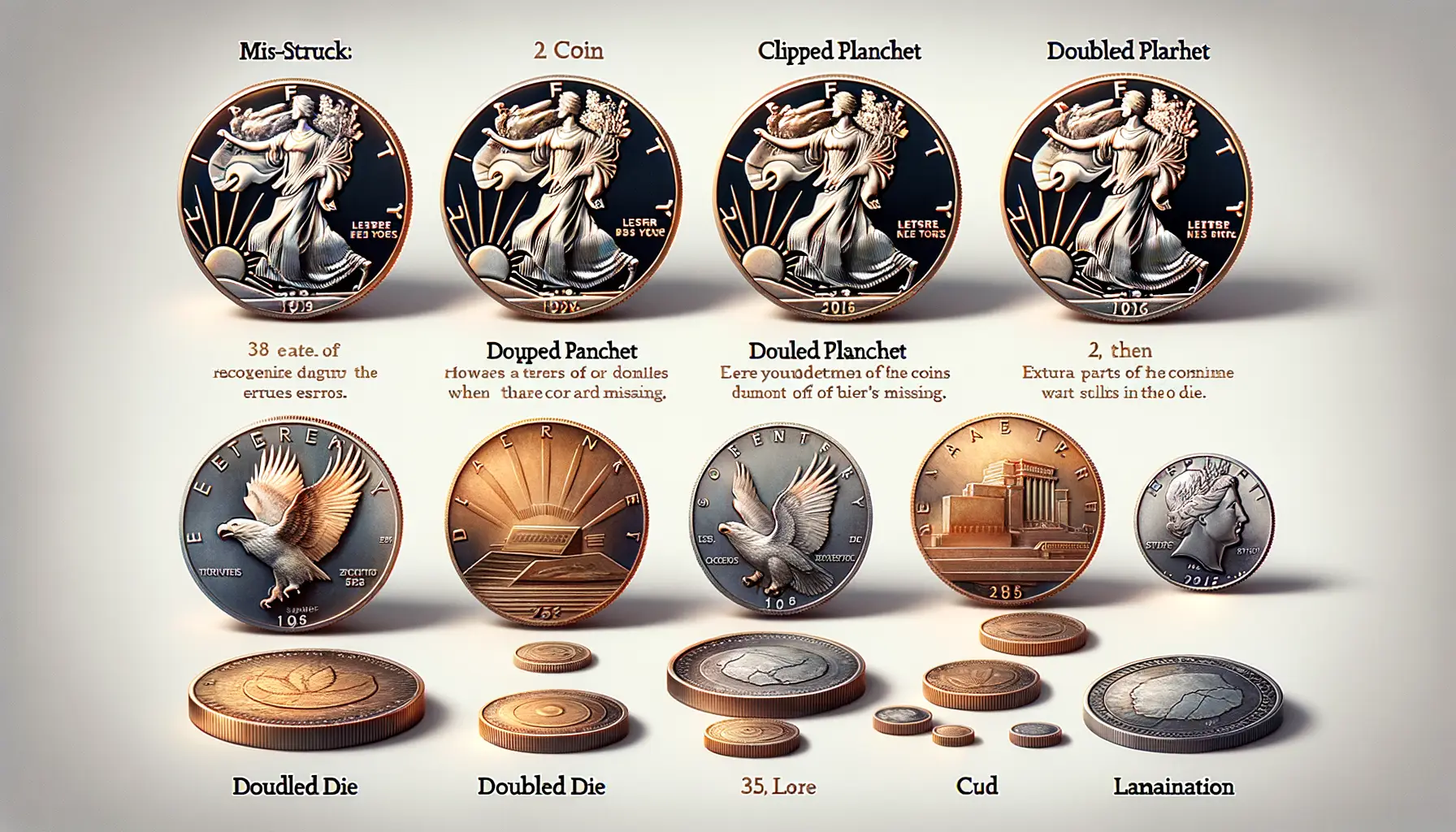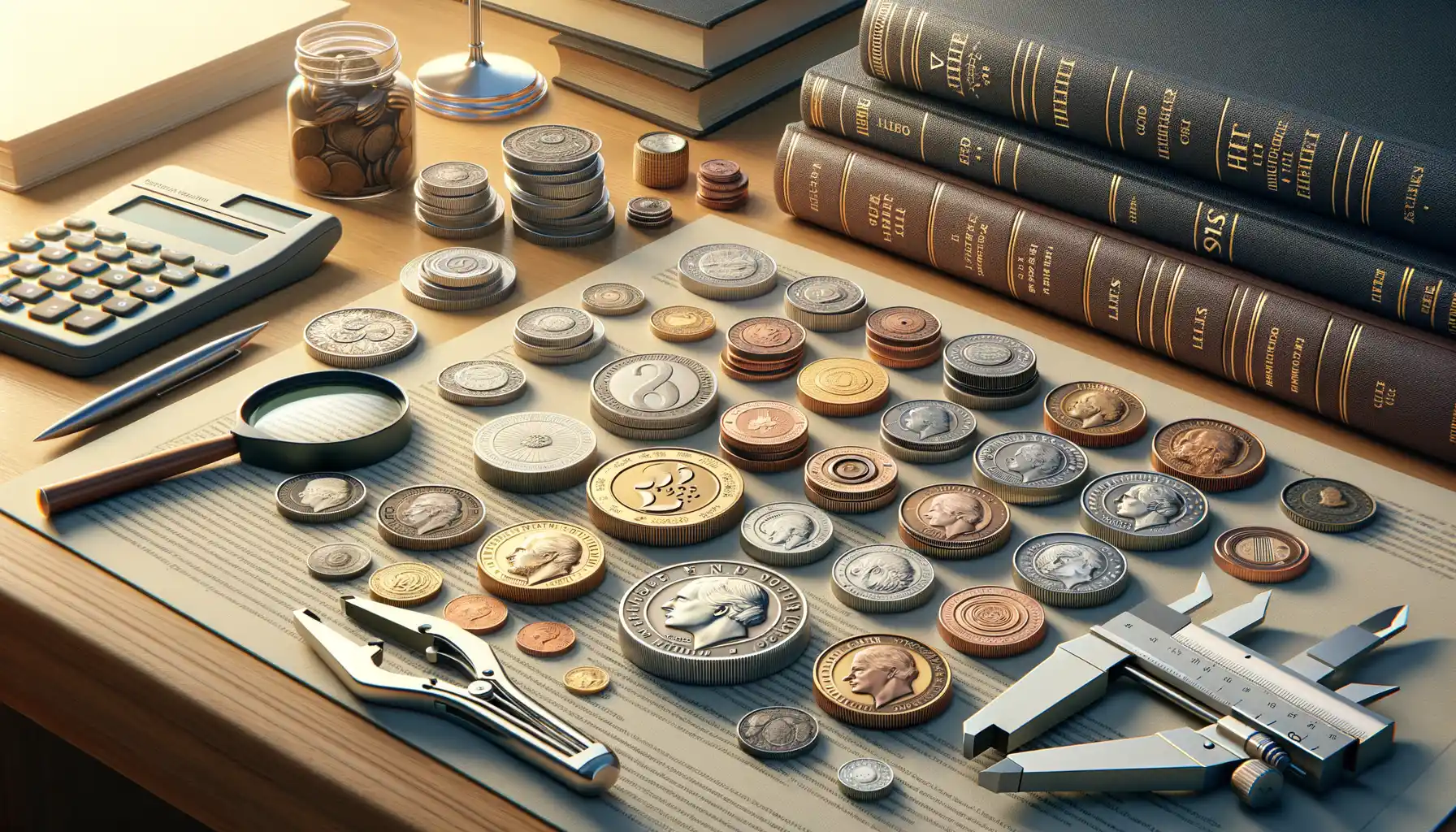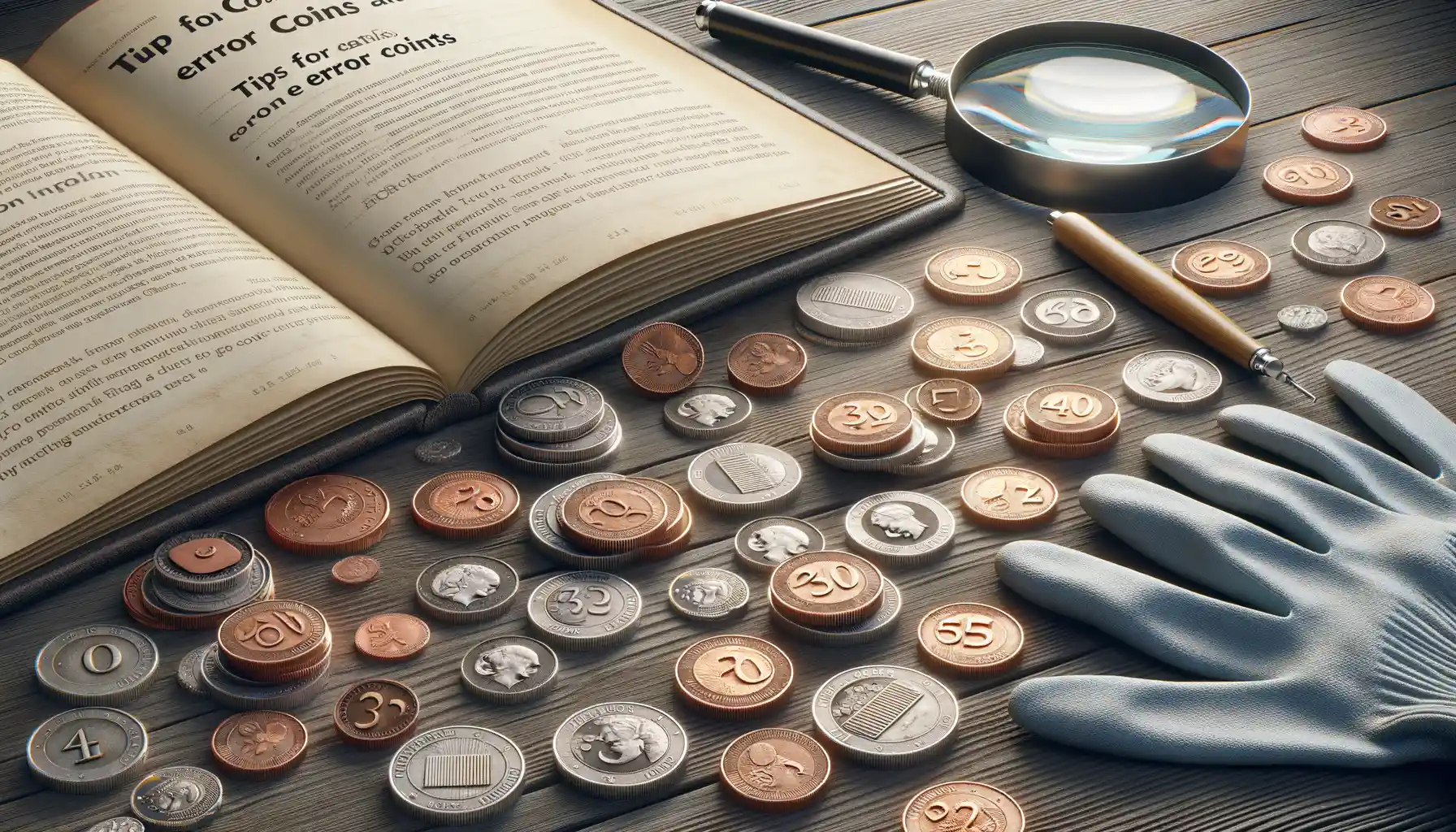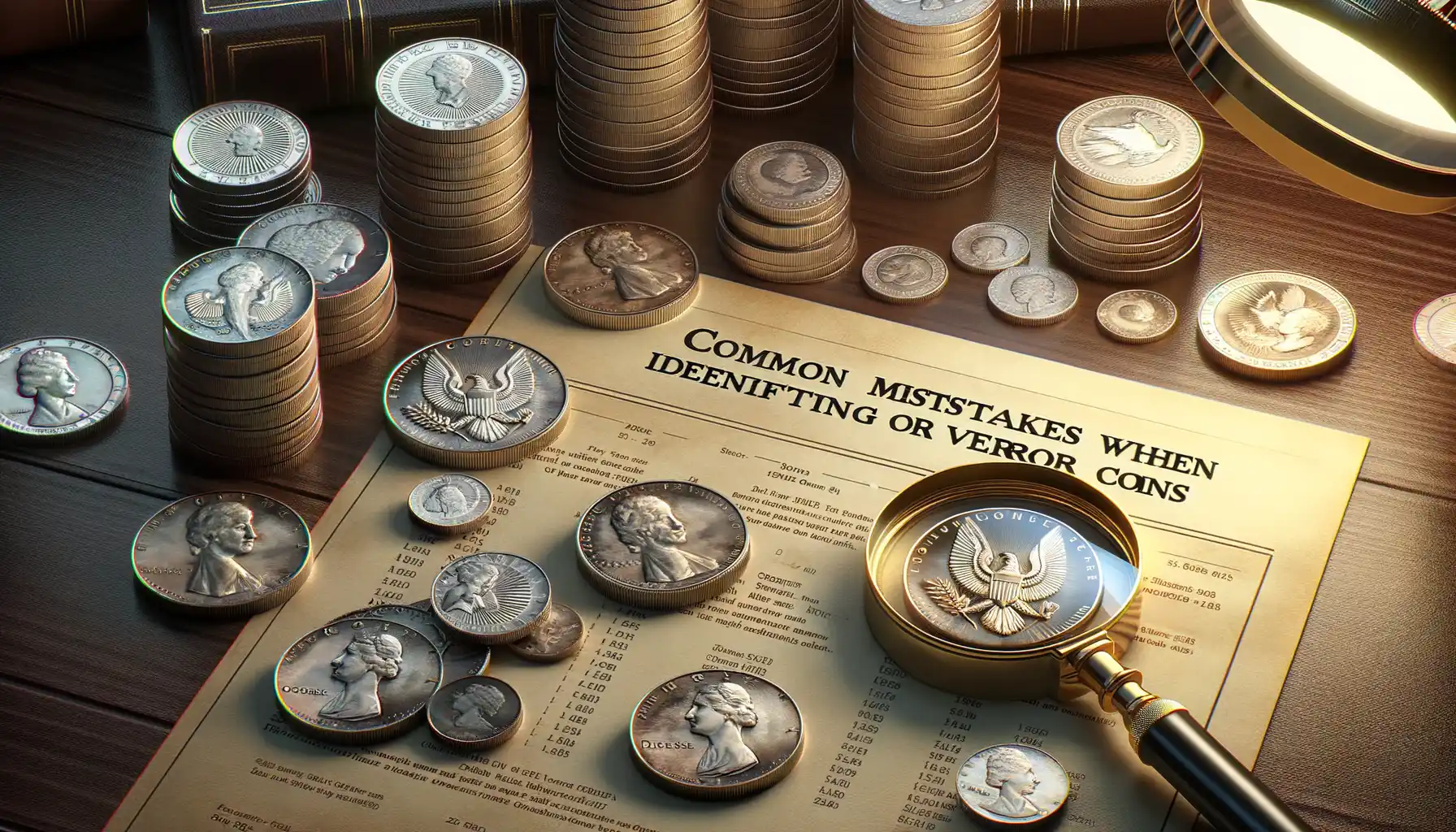Understanding Error Coins and Their Significance
What Makes Error Coins So Fascinating?
Imagine holding a coin in your hand that defies expectations—a nickel with an off-center strike, a dime missing part of its design, or a penny that’s… silver? These quirky misfits of the minting process are known as error coins, and they’re like hidden treasures waiting to be discovered.
What makes them so special? It’s their uniqueness! In a world of mass-produced perfection, error coins stand out as one-of-a-kind anomalies. They weren’t meant to exist, yet here they are, commanding attention from curious collectors and seasoned numismatists alike.
But they’re more than just conversation starters. Error coins hold historical value, telling stories about how technology, human error, and even changing economies have shaped our daily currency. For example, a simple misalignment in a coin press decades ago can now fetch hundreds—or thousands—of dollars.
- A doubled die penny can reveal how layering mistakes happen in minting.
- A planchet error might showcase the wrong metal mixture or size.
- An entirely wrong denomination strike might make you wonder, “How did this escape the Mint?”
When you spot an error coin, it’s like uncovering a piece of history no one else noticed. Every scratch, dent, or imperfection tells a tale.
Types of Error Coins and How to Recognize Them

Uncovering the Many Faces of Minting Mishaps
Look closely at your coins—beyond their design, beyond their shine. Error coins are like little rebels that defied perfection during the minting process. Recognizing them? It’s half detective work, half treasure hunt. Here’s a breakdown of some fascinating types:
- Off-Center Strikes: Imagine a coin where the design is pushed to one side, leaving a blank crescent on the other. These quirks occur when the coin blank isn’t properly aligned during striking. The more off-center it is (and if the date’s visible), the more valuable!
- Die Cracks and Breaks: Overworked dies sometimes crack under pressure, leaving raised, jagged lines snaking across the coin. These fractures create patterns no two coins will share.
- Double Dies: Ever see a coin where the text or design looks shadowy, almost as if it’s echoing itself? This happens when the die is engraved twice but slightly misaligned—a collector’s favorite!
Small Details That Pack a Punch
It’s often the tiniest quirks that set error coins apart. Look for clipped edges, appearing like someone took a bite out of the coin! Or, examine closely for planchet defects, such as surface holes or uneven textures caused before the minting even began. Some errors, like the famous 1955 doubled-die Lincoln cent, can spark a serious adrenaline rush for enthusiasts.
Flip, rotate, squint—don’t be afraid to scrutinize! Each imperfection tells a story, and every discovery feels like stumbling upon a hidden treasure chest. Error coins aren’t just anomalies; they’re whispers from the minting past, waiting for someone curious enough to listen.
Methods to Accurately Determine the Value of Error Coins

Pinpointing the True Worth of Your Error Coin
Determining the value of an error coin feels a bit like treasure hunting, doesn’t it? You spot that rare anomaly, and now it’s time to figure out just how much it’s worth. But hold on, it’s not always straightforward—there are several factors at play here, and each one can make a surprising difference.
First, let’s talk about rarity. How many of these coins exist? If you’ve stumbled upon a unique minting mistake, like a double die or off-center strike, chances are you’re holding something special. The key here is research. Dive into coin forums, check auction listings, and consult resources like the Cherry Picker’s Guide to Rare Die Varieties.
Condition also steals the spotlight. A high-grade error coin in pristine condition can fetch exponentially more than one with heavy wear. Professional grading services like PCGS or NGC can authenticate your coin and assign a grade that carries weight with buyers.
- Use online marketplaces (eBay, Heritage Auctions) to track what similar coins have sold for recently.
- Speak with numismatists or attend a coin show—sometimes a quick opinion from an expert can save hours of guesswork.
And don’t forget demand—the quirks of collector tastes can shift values overnight. An error type might suddenly trend on social media, sparking a bidding frenzy. Keep an eye on the pulse of the market!
Tips for Collecting and Preserving Error Coins

Start Your Collection with Careful Eyes and a Curious Mind
Collecting error coins can feel like a thrilling treasure hunt—each discovery telling its own quirky tale from the mint. The first step? Sharpen your observation skills. A good magnifying glass or a 10x jeweler’s loupe is essential to spot those tiny yet valuable imperfections like doubled dies or off-center strikes. And don’t forget: lighting is everything! Use a bright but diffused light source to reveal hidden details.
When adding coins to your collection, handle them gently—your fingers might leave oils that tarnish the surface over time. Hold coins by their edges, never on the face. It might sound overcautious, but trust me, future-you will thank you when your prized coin still gleams like the day it left the mint.
Preservation Techniques That Stand the Test of Time
Protecting your error coins is as much art as science. Follow these tips to keep your treasures pristine:
- Store coins in acid-free holders or coin flips made specifically for long-term storage.
- Avoid PVC-based holders; they may soften over time and damage your coins with an unsightly green residue.
- Keep them away from humidity and fluctuating temperatures—think of coins as museum pieces, not pocket change.
And one final tip: catalog your collection. Document every error type, date, and feature. It’s not just practical—it turns your collection into a legacy.
Common Mistakes When Identifying or Valuing Error Coins

Pitfalls When Spotting an Error Coin
Let’s face it: hunting for error coins can feel like finding a diamond in a desert. But too often, excited collectors stumble by making avoidable mistakes. One of the biggest? Rushing into assumptions. Just because a coin looks odd doesn’t mean it’s a rare minting error—it could be post-mint damage (think dropped on concrete or squished by car tires). That scuffed penny you’re holding? It might be more “oops” than treasure!
Another common hiccup? Over-reliance on online images. No two errors look exactly alike, and lighting or condition can massively alter how a coin appears. Trust your magnifying glass over Google comparisons.
Avoid These Valuation Slip-Ups
Even seasoned collectors can overestimate value by ignoring context. Don’t forget: rarity is half the equation, but demand is the other. A misaligned die might fetch hundreds—or just a shrug—depending on collector interest. Take these steps to keep your valuation game sharp:
- Verify authenticity: Get a trusted appraiser! Counterfeits lurk everywhere.
- Research similar sales: Auction prices tell real-world stories.
- Stay condition-savvy: Grading dramatically sways worth.
Seriously, would you pay top dollar for a scratched-up Picasso print? Coins deserve the same scrutiny!
